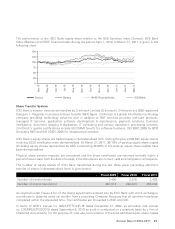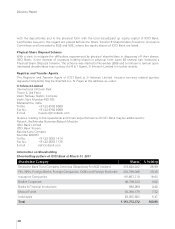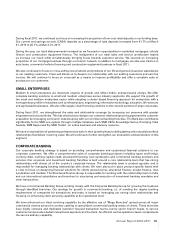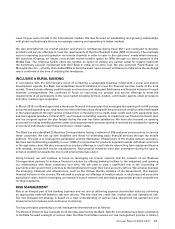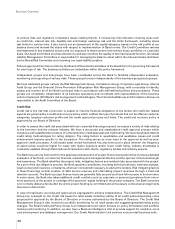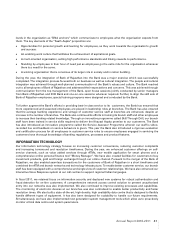ICICI Bank 2011 Annual Report Download - page 36
Download and view the complete annual report
Please find page 36 of the 2011 ICICI Bank annual report below. You can navigate through the pages in the report by either clicking on the pages listed below, or by using the keyword search tool below to find specific information within the annual report.
Business Overview
ECONOMIC OUTLOOK
The long-term fundamentals of the Indian economy continue to be strong. These include favourable demographics,
rising incomes, growing consuming class and a large investment pipeline. These growth drivers are expected to be
sustained over the medium-to-long term. The growth of the economy is being driven primarily by domestic investment
and consumption, with limited dependence on exports or the demand situation in other economies. In addition, the
growing economic activity in rural India and the emergence of smaller cities as important growth drivers are key
positive developments.
At the same time, there are some concerns, particularly with regard to inflation. Inflationary pressures emerging from
commodity and food prices have shown signs of becoming more generalised, leading to the containing of inflation
becoming the key priority of policy makers. In addition, the global economic environment continues to remain
uncertain with slow recovery and fiscal concerns in developed markets.
We believe that while these challenges may have an impact in the short term and cause periodic volatility, the strong
underlying fundamentals of the Indian economy would sustain high rates of growth over the medium to long term.
For a discussion of recent economic and regulatory developments, please refer to “Management’s Discussion &
Analysis”.
BUSINESS REVIEW
During fiscal 2011, the Bank focused on 5Cs strategy – Credit growth, CASA mobilisation, Cost optimization, Credit
quality improvement and Customer centricity. We believe that we have achieved substantial success on all the
parameters of this strategy and are well placed to leverage on the growth opportunities in the economy.
RETAIL BANKING
After significant moderation in previous years, retail credit growth in the system picked up pace in fiscal 2011. As per
data published by RBI for the period up to March 25, 2011, year-on-year retail credit growth was about 17%.
We continue to believe that retail credit in India has robust long-term growth potential, driven by sound fundamentals
of rising income levels and favorable demographic profile. We will continue to focus on select retail asset segments
like housing and vehicle loans where we expect significant demand over the medium to long term. We are also seeing
smaller markets beyond the large urban centres emerging as important drivers of growth in this segment. In addition,
customer segments are now maturing given the increase in incomes. These distinct customer segments, with widely
different requirements and risk-reward characteristics, require specialised strategies. We believe that our knowledge
of the customer and insights into the Indian market position us well to take advantage of these opportunities.
Our branches are the key points of customer acquisition and service. Accordingly, our organisation structure has
been shaped to provide greater empowerment to our branches. The branch network is expected to serve as an
integrated channel for deposit mobilisation, selected retail asset origination and distribution of third party products as
well as the focal point for customer service. The outbound sales teams have been strengthened and brought under
branch supervision. They are supported by the operations and phone banking teams to deliver high quality service,
customer retention and up-selling; and by a strategic product and service design team to design product and service
strategies for different customer segments. We have deepened our engagement and relationship with customers and
created more opportunities for cross-selling other products by introducing dedicated privilege banking areas, which
are manned by specially trained privilege bankers, and exclusive wealth branches for our high net worth customers.
The Bank’s focus during the year was on delivering superior customer service in line with its articulated Khayaal Aapka
proposition.
During the year, we acquired The Bank of Rajasthan which substantially enhanced our branch network and strengthened
our presence in northern and western India. The merger of Bank of Rajasthan added over 450 branches to our network.
Including these, our branch network has increased from 1,707 branches at March 31, 2010 to 2,529 branches at March 31,
2011. We also increased our ATM network from 5,219 ATMs at March 31, 2010 to 6,055 ATMs at March 31, 2011.
34





